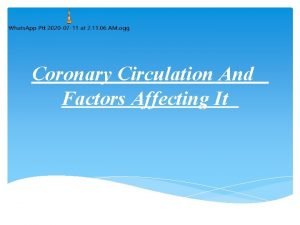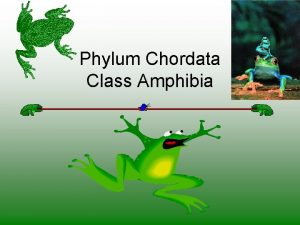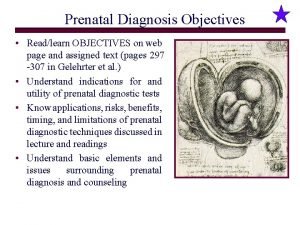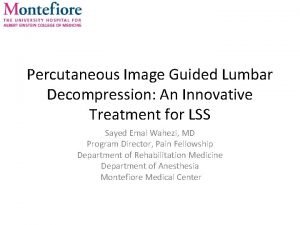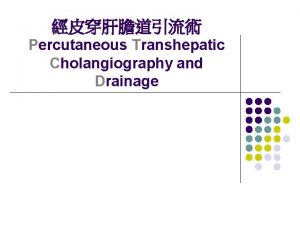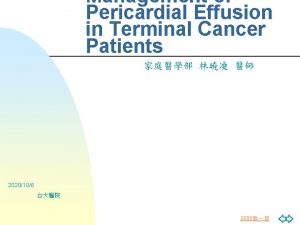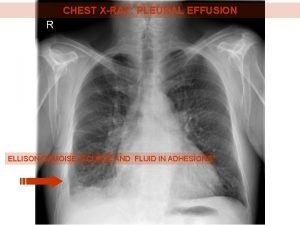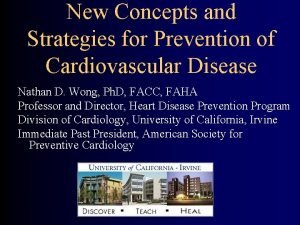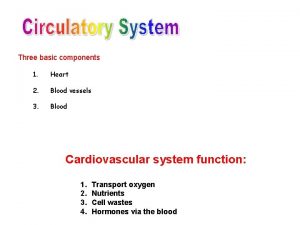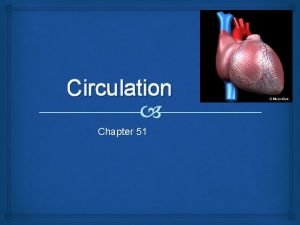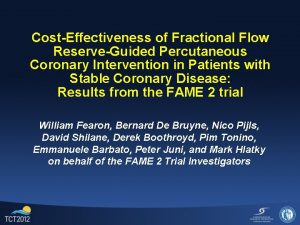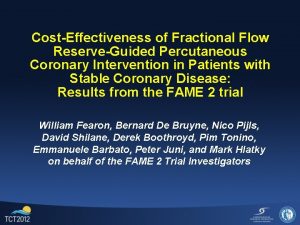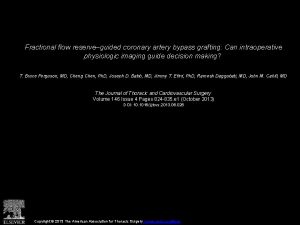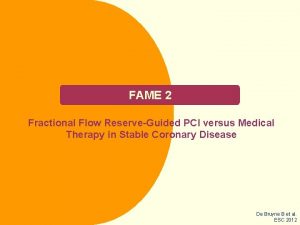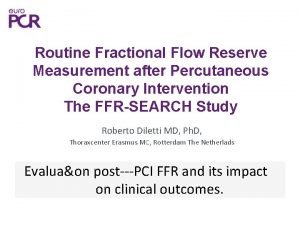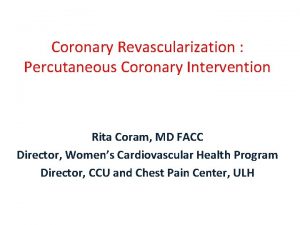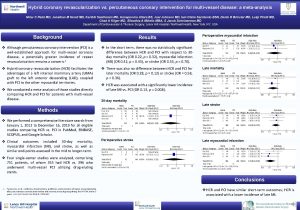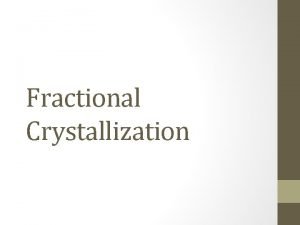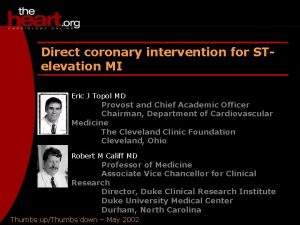CostEffectiveness of Fractional Flow ReserveGuided Percutaneous Coronary Intervention










- Slides: 10

Cost-Effectiveness of Fractional Flow Reserve-Guided Percutaneous Coronary Intervention in Patients with Stable Coronary Disease: Results from the FAME 2 trial William Fearon, Bernard De Bruyne, Nico Pijls, David Shilane, Derek Boothroyd, Pim Tonino, Emmanuele Barbato, Peter Juni, and Mark Hlatky on behalf of the FAME 2 Trial Investigators

Disclosure Statement of Financial Interest Within the past 12 months, I or my spouse/partner have had a financial interest/arrangement or affiliation with the organization(s) listed below. Affiliation/Financial Relationship • Grant/Research Support • Consulting Fees/Honoraria • Major Stock Shareholder/Equity • Royalty Income • Ownership/Founder • Intellectual Property Rights • Other Financial Benefit Company • St. Jude Medical, NIH • Heart. Flow FAME 2 was sponsored by St. Jude Medical

Fractional Flow Reserve Proximal Pressure (Pa) Distal Pressure (Pd) FFR = Pd / Pa during maximal flow Pa Pd / Pa = 60 / 100 FFR = 0. 60 Pd

FAME 2 Trial Stable patients with 1, 2, or 3 vessel CAD evaluated for PCI with DES n=1220 FFR in all target lesions Registry Randomized Trial At least 1 stenosis with FFR ≤ 0. 80 (n=888) All FFR > 0. 80 (n=322) Randomization 1: 1 PCI + MT MT MT 50% randomly assigned to follow-up Primary Endpoint: Death, MI, Urgent Revascularization at 2 years

FAME 2 Trial Results FFR-Guided PCI (n=447) MT (n=441) P-Value 4. 3 12. 7 <0. 001 Death 0. 2 0. 7 0. 31 Myocardial Infarction 3. 4 3. 2 0. 89 Urgent Revascularization 1. 6 11. 1 <0. 001 Free from Angina (1 month) 71 48 <0. 001 Primary Endpoint % De Bruyne, et al. New Engl J Med 2012; 367: 991 -1001.

Results Quality of Life at 1 Month FFR-Guided PCI MT p-value Class 0 -1 89 71 <0. 001 Class 2 -4 11 29 <0. 001 0. 054 0. 003 <0. 001 Angina (%) Utility Change

Cumulative Costs over 12 Months $2, 508 $5, 485 % of study population 100% 56% 11%

FFR-Guided PCI Cost-Effectiveness In-trial results $2, 500 / 0. 047 QALY = $53, 000 / QALY Three Year Projection $2, 500 / 0. 079 QALY = $32, 000 / QALY

Cost-Effectiveness CE Benchmarks: >$150, 000 / QALY Hemodialysis ≈ $50, 000 / QALY WHO GDP std ≈ $150, 000 / QALY $50 K-150 K / QALY Study Comparators <$50, 000 / QALY CE Ratio COURAGE Angio-Guided PCI vs Medical Therapy ≥ $168, 000 / QALY FAME 1 Angio-Guided PCI vs FFR-Guided PCI is Dominant (↓$ / ↑QALY) FAME 2 FFR-Guided PCI vs Medical Therapy $32, 000 / QALY

Conclusion: • FFR-Guided PCI has higher initial cost than medical therapy. • The cost gap narrows >50% by one year. • Angina and quality of life are significantly improved by PCI. • FFR-Guided PCI appears to be economically attractive in cost-effectiveness analysis
 Coronary blood flow
Coronary blood flow Frog heart
Frog heart Amnio vs cvs
Amnio vs cvs Percutaneous image-guided lumbar decompression (pild)
Percutaneous image-guided lumbar decompression (pild) Percutaneous transhepatic cholangiography and drainage
Percutaneous transhepatic cholangiography and drainage Percutaneous balloon pericardiotomy
Percutaneous balloon pericardiotomy Ellis s shaped curve
Ellis s shaped curve Transhepatic cholangiography
Transhepatic cholangiography Mesa coronary calcium score
Mesa coronary calcium score 3 main functions heart
3 main functions heart Heart cycle animation
Heart cycle animation
